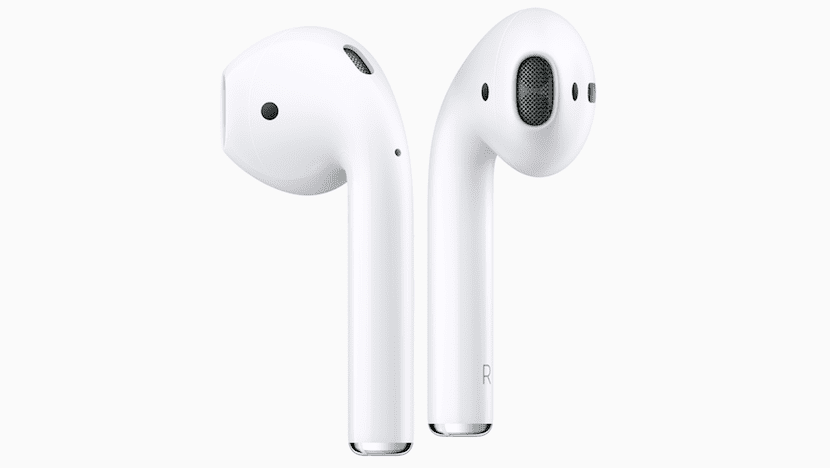
The United States Patent and Trademark Office published last Thursday Apple's application for registration of the patent for a "headphone speaker with a hybrid audio and transparency system" that would give future AirPods a advanced noise cancellation system not much different on Bose headphones, but with a little twist that would set them apart ostensibly.
The proposal made by Apple is based on the management and cancellation of the noise that surrounds the device, referring to it in the patent as an audio gateway that would allow the sounds of the ambient environment to be selectively accepted or discarded, as explained in AppleInsider. Typical ear canal sealing headphones, high power consumption microphones and digital noise processing are used to reduce unwanted sound by creating a second sound specifically designed to cancel out the first. When you want to hear what is happening in your environment, pass-through systems integrate the external sound picked up by the microphones into the signal in the audio signal. The publication points out that this method has its drawbacks, because the sealing of the ear canal leads to amplifying the sounds of the echo, such as that of a user's own voice or other sounds such as those created by the movement of the body. This is known as occlusion or isolation effects.
Apple's invention could allow future fully sealed AirPods to reduce noise and unwanted sounds, but without the occlusion effect explained above. The patent pending product presentation mentions the use of an acoustic valve or flap, which could go from being open to closed and vice versa, as required by a small on-board motor to allow the entry of sounds or not.
The effects of occlusion can be largely avoided by the ventilation created by the valve (in the stem of one of the pads, for example) during a telephone conversation. Alternatively, the valve can be closed when a user is listening to music, thus isolating the audio content emitted by the headphones from the existing outside noise.
In either case, a physical valve is more efficient than constant digital sound processing. Actuation of the valve could be made automated by interpreting data from the AirPods' integrated sensors. For example, voice microphones and accelerometers could detect when a user is speaking into headphones, thereby causing the valve to actuate. Other actions that would trigger the operation of the valve would start from a base of audio signals collected by the device and that would start from the user's environment.
On the other hand, if the motion sensors built into the AirPods detect that what is being done is a physical activity, Apple's system could open the valve so that the user is more aware of the sounds of their environmentsuch as car or other traffic to increase your own safety.
In addition to passive ventilation, Apple also describes a sound augmentation system that works in a similar way to existing sound selection technology. It is activated only when the headphone valve is open. Thus, the sound augmentation system would pick up the audio from an external microphone, it would adjust its frequency and deliver it increased to the user. The objective is to reproduce the ambient sound to the user as if the user were not wearing headphones.
The system could even equalize the existing pressure during aircraft takeoffs and landings, by regulation of pressure in the ear canal from the user's ear. Apple's invention was first introduced in January 2016, thanks to the work of engineer Scott C. Grinker, its inventor.